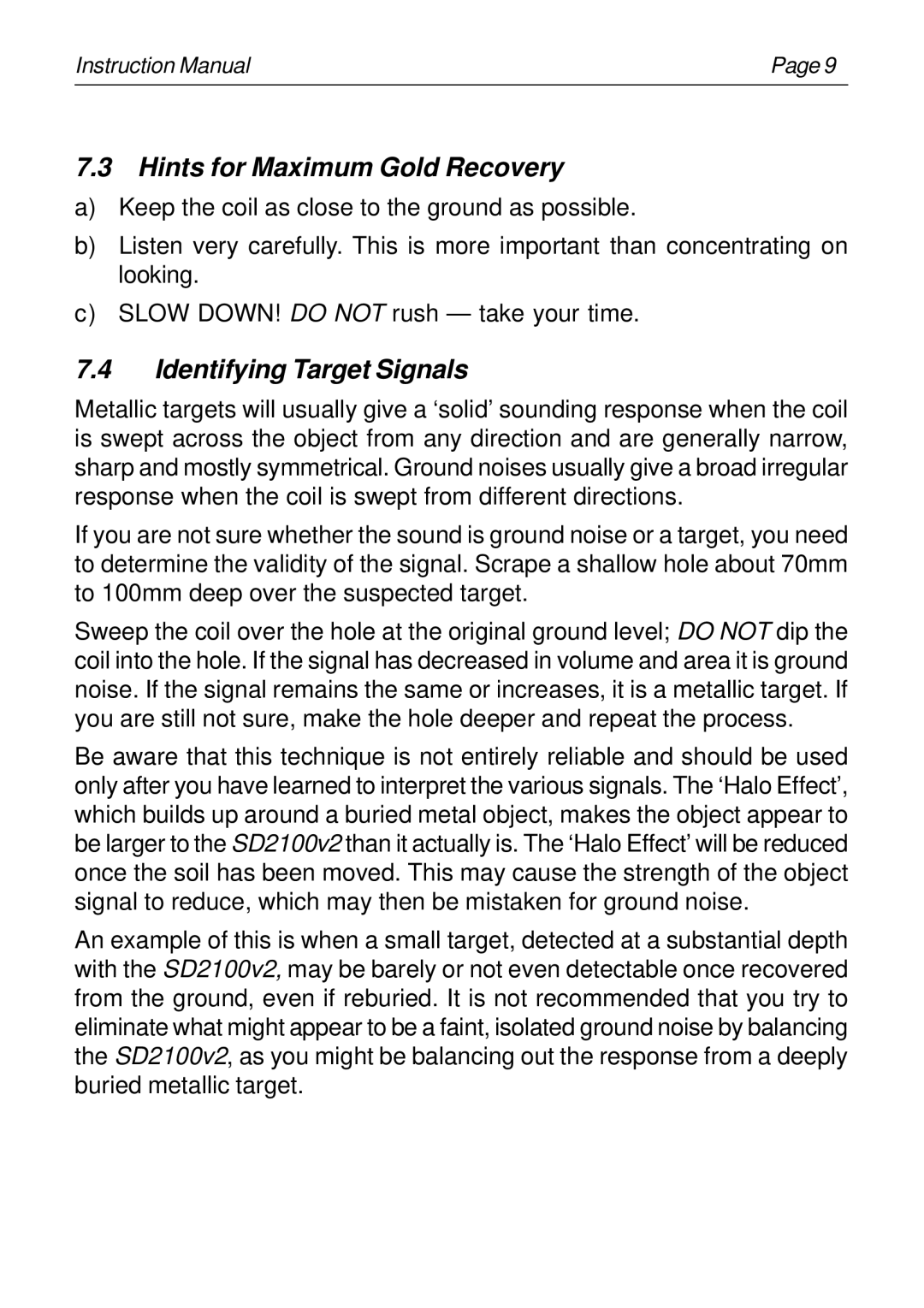Instruction Manual | Page 9 |
7.3Hints for Maximum Gold Recovery
a)Keep the coil as close to the ground as possible.
b)Listen very carefully. This is more important than concentrating on looking.
c)SLOW DOWN! DO NOT rush — take your time.
7.4Identifying Target Signals
Metallic targets will usually give a ‘solid’ sounding response when the coil is swept across the object from any direction and are generally narrow, sharp and mostly symmetrical. Ground noises usually give a broad irregular response when the coil is swept from different directions.
If you are not sure whether the sound is ground noise or a target, you need to determine the validity of the signal. Scrape a shallow hole about 70mm to 100mm deep over the suspected target.
Sweep the coil over the hole at the original ground level; DO NOT dip the coil into the hole. If the signal has decreased in volume and area it is ground noise. If the signal remains the same or increases, it is a metallic target. If you are still not sure, make the hole deeper and repeat the process.
Be aware that this technique is not entirely reliable and should be used only after you have learned to interpret the various signals. The ‘Halo Effect’, which builds up around a buried metal object, makes the object appear to be larger to the SD2100v2 than it actually is. The ‘Halo Effect’ will be reduced once the soil has been moved. This may cause the strength of the object signal to reduce, which may then be mistaken for ground noise.
An example of this is when a small target, detected at a substantial depth with the SD2100v2, may be barely or not even detectable once recovered from the ground, even if reburied. It is not recommended that you try to eliminate what might appear to be a faint, isolated ground noise by balancing the SD2100v2, as you might be balancing out the response from a deeply buried metallic target.
